Every U.S. Military Service Academy Explained (What are they like?)

Everyone joining the military goes through some sort of “boot camp” or “basic training”, which is the initial training that turns civilians into service members. If you’re enlisting in the U.S. military, this is where you go. But it’s not as straightforward for those commissioning as officers. There’s a few routes you can take, such as Officer Candidates School and ROTC, but then there’s the renowned Military Academies, also known as the service academies, which will be the main focus of this blog post.
The United States Service Academies are unique, prestigious, and effective educational programs that build future officers of the U.S. military from the ground up. Along the way, students earn themselves a Bachelor of Science degree and a commission in their respective branches, moving on to serve as officers.
With that said, how many service academies are there? What are they all like? What are the similarities and differences between them? And if you’re interested in attending one of these, which one’s best for you? Keep reading as we’re going to answer all of those questions for you, and much more.
There are currently five official service academies in the U.S. Military:
-
Military Academy (also known as West Point),
-
Naval Academy,
-
Air Force Academy,
-
Coast Guard Academy,
-
Merchant Marine Academy.
The DoD is in charge of West Point, Naval Academy, and Air Force Academy. The DHS is in charge of the Coast Guard Academy, and the DoT is in charge of the Merchant Marine Academy. And while we’re here, West Point trains officers for the Army, the Naval Academy trains officers for the Navy and Marine Corps, Air Force Academy trains officers for the Air Force and Space Force, the Coast Guard Academy trains Coast Guard Officers, and the Merchant Marine Academy… well, there’s actually a lot of possibilities, so you’ll have to keep reading to find out because it’s pretty cool.
TABLE OF CONTENTS
U.S. MILITARY SERVICE ACADEMIES: OVERVIEW
U.S. MILITARY SERVICE ACADEMIES: WEST POINT
U.S. MILITARY SERVICE ACADEMIES: NAVAL ACADEMY
U.S. MILITARY SERVICE ACADEMIES: AIR FORCE ACADEMY
U.S. MILITARY SERVICE ACADEMIES: COAST GUARD ACADEMY
U.S. MILITARY SERVICE ACADEMIES: MERCHANT MARINE ACADEMY
U.S. MILITARY SERVICE ACADEMIES: CONCLUSION
U.S. MILITARY SERVICE ACADEMIES: OVERVIEW

Before we dive into the specifics for each academy, we’re going to go into a general overview of what you can expect from all of them because they follow similar structures. Each academy has a four-year curriculum, structured similar to the Freshman, Sophomore, Junior and Senior format that colleges have, but they use different names for their years, each with their own unique names or “ranks” if you will. It’s important to note that your time at a service academy ain’t going to be like college. Military instruction is heavily intertwined throughout the curriculum.
Your days will be heavily regimented, you will deal with a lot of extra B.S. as some may call it, and overall, you will need to be much more responsible and careful throughout your time there as compared to your traditional college counterparts. For example, not only do academy attendees get subjected to the UCMJ, they will have plenty of extracurriculars they must manage on top of their course load, and every student must participate in some sort of sport or activity throughout their time at the academy. After graduation, the minimum commitment for most graduates is 5 years of active duty plus three years in the reserves, but this can differ depending on the job you land. If you do the math there, going to a service academy is a 12 year commitment.
Generally speaking, at the halfway point in the academies, you will have the opportunity to back out or reaffirm your commitment to serve. Those who back out, or “step left” before the halfway point typically do not have to pay anything back. However, once you take your oath, you’re in, and after that point, you will owe Uncle Sam. You’ll either need to pay back your time with money or enlist to make up for it. So yes, your education will be free at the service academies, but understand that you will pay it back one way or another once you commit.
As far as admissions go, the academies are open to anyone in or out of the military that meets the general requirements of their respective academy, but a majority of applicants are coming out of high school. While we’ll cover the specific requirements in each section, generally speaking, applicants must secure a nomination from a congressman, senator, VP or president. The application processes for the service academies are highly selective, with some academies having acceptance rates as low as 11%. Fun fact, though, if you happen to be the child of a Medal of Honor recipient, so long as you meet the minimum eligibility requirements, you will automatically get accepted into any service academy your heart desires. The more you know!
If you’re having the problem of deciding which one you want to go to, and you have a fear of missing out, just know that you can request to do an exchange program where you spend 6 months at another academy to see what it’s like. It’s not a guarantee, but it’s there if you want it and can be a fun experience for those who do it.
U.S. MILITARY SERVICE ACADEMIES: WEST POINT

The United States Military Academy is the oldest service academy, having been stood up in 1802 by President Thomas Jefferson. It is located in West Point, NY, hence the name “West Point.” Several prominent figures have graduated from this prestigious academy, such as Douglas MacArthur, John J. Pershing, Dwight D. Eisenhower, and Buzz Aldrin.
Attendees at West Point are collectively referred to as cadets. During a cadet’s time at West Point, they will go through a four-year course of study to earn a Bachelor of Science degree in one of the 36 majors the academy offers. Along the way, they will receive various military instructions and guidance to prepare them to serve as Second Lieutenants in the U.S. Army upon graduation.
From their first to last year in the academy, the cadets are officially called Fourth Class, Third Class, Second Class, and First Class cadets, respectively. Informally, Fourth Class cadets are referred to as plebes, third class cadets are called yearlings, second class cadets are called cows, and first class cadets are called firsties.
At West Point, most of the military training takes place during the summer. The first summer happens before your plebe year, which is about a month or two after your graduation if you’re coming straight from high school. This is called Cadet Basic Training, or “Beast Barracks” and is six weeks long. It’s essentially like a mini boot camp you go through before you start your actual work as a cadet. The second summer is Cadet Field Training at nearby Camp Buckner, and then the third and fourth summers are spent serving in active U.S. Army units around the world. You’ll also have the opportunity to attend advanced training courses, such as airborne or air assault school, so before you’re commissioned, you can get some pretty cool opportunities.
In a nutshell, each day you spend at West Point is going to be highly regimented, with almost every minute of your day being accounted for. As a new cadet, you’ll have plenty of responsibilities and B.S. to deal with, but your quality of life slowly gets better with each passing year. This is a common trend in the service academies – upperclassmen have a better quality of life than underclassmen do.
So, you’re not a cadet forever, so what about the job opportunities in the Army after you graduate? West Point starts to pick up the pace on figuring out your interests and where you’re going to go in your third and fourth years. Every year, West Point hosts a “branch week," which helps cadets decide what they want to do after graduation. “Branches” are specialized occupational fields that the U.S. Army has, each with their own area of technical and tactical expertise. Depending on the needs of the Army and your personal desires, you will pick from the branches below. In a nutshell, the Army will confirm which areas they want to work in, and in return, the career fields will review the cadet’s accolades, such as test scores, PT scores, personal statements, and interviews, and tell the Army whether they are a viable candidate. As always, unless a contract says otherwise, there’s no guarantee that you’ll land the job you want.
Once you know where you’re going, after graduation, you’ll attend a Basic Officer Leader Course, and then you'll study branch-specific material to become competent in the technical aspects of your occupational specialty.
To be eligible,
-
You must be at least 17 but not 23 or older by July 1 of the year you enter,
-
A U.S. citizen,
-
Not married or pregnant, and not legally responsible for child support.
U.S. MILITARY SERVICE ACADEMIES: NAVAL ACADEMY

The United States Naval Academy, located in Annapolis, Maryland, is the second oldest service academy of the bunch, having been founded on October 10, 1845, by George Bancroft. Several notable people have graduated from here, such as Admiral Chester Nimitz, John McCain, Jimmy Carter, and Ross Perot.
Those who attend the Naval Academy are known as midshipmen, and go through a four year course of study where they earn a bachelor of science degree in one of the 26 majors offered. Attendees will either move on to serve as ensigns in the Navy or Second Lieutenants in the Marine Corps.
From year 1 to year 4, the midshipmen are referred to as Fourth Class, Third class, Second Class, and First Class Midshipman, respectively. Informally, the fourth class midshipman are also referred to as “plebes.” And like the other service academies, they have extra responsibilities and B.S. that they have to deal with until they move on to be upperclassmen.
Because of the college curriculum throughout the school year, a majority of the military training occurs during the summers spent at the Naval Academy. The first taste starts at what is known as “Plebe Summer”, which is the Naval Academy’s version of a boot camp all attendees must go through. It lasts approximately 7 weeks long, separated into two sets, and consists of rigorous physical and mental training to “turn civilians into midshipmen.”
In the second summer between the plebe and third class years, you’ll go to sea for three weeks in a Yard Patrol craft to various New England ports and spend three weeks in either Naval Academy sailing sloops or attend naval tactical training. The third summer turns things up a notch and is action-packed. You’ll fly in Navy aircraft, go in a nuclear powered submarine, and patrol with the Marine Corps. Not only that, but you’ll become part of a ship’s crew for four weeks. This all serves to give you a first-hand experience of the daily routine of the various aspects of the U.S. Navy so you know what you like and don’t like. By your last summer, you should have honed in on what or where you want to go, and will spend 4-8 weeks in an operational unit from any of the areas the Navy or Marine Corps can offer. Those wanting to become Marine Officers will go through a four week course known as Leatherneck, which brings us into how midshipmen can choose whether to go Navy or Marine Corps.
Essentially, you need to know that getting into the Naval Academy does not guarantee whether or not you’ll go into the Marine Corps. By default, you’re going to go to the Navy, unless you express interest and work on the prereqs to get into the Marine Corps. Without getting too specific, midshipmen must pass various PT tests the Marine Corps offers and submit the right paperwork to get a shot at going to Leatherneck, where they will be evaluated to see if they’re a good fit for the Marines. They also get the opportunity to do four weeks of “MAGTF”, which is being attached to an operational Marine Corps command. If ultimately selected, upon graduation, they’ll be commissioned as Marine Officers and will move onto The Basic School and their follow on training. Nearly 30% of each graduating class may be chosen for commissioning in the Marine Corps.
Bringing things back to all midshipmen, they get the opportunity to state their career preferences early in the senior, or first class year. Obviously, the job or unit you want is dependent on the needs of the Navy, but with that said, 93% of the class of 2021 received their first or second assignment preference. Fun fact: a cool tradition happens that’s called Ship Selection Night, where those going to be Surface Warfare Officers get to pick their ships in order of how well they did in their class.
Here are the basic requirements you need to meet to be accepted to the Naval Academy:
-
A U.S. Citizen by July 1 of the year of entry, at least 17 and not have passed your 23rd birthday On July 1 of the year of entry,
-
Unmarried,
-
Not pregnant,
-
Have no dependents
-
To have a valid Social Security Number.
U.S. MILITARY SERVICE ACADEMIES: AIR FORCE ACADEMY

The Air Force Academy, located in Colorado Springs, Colorado, is the newest of the five service academies, having graduated its first class in 1959. Those who attend the Air Force Academy are known as cadets and go through a four year course of study to earn a bachelor of science in the 32 majors that are offered. It’s important to note here that the curricula offered definitely cater to those who’d be interested in engineering or aeronautics. Throughout their time there, cadets will receive military training to prepare them to serve as Second Lieutenants in the U.S. Air Force or Space Force.
From their first year to their fourth year, cadets are known as Fourth Class, Third Class, Second Class, and First Class cadets, respectively. Much like all of the other service academies, cadets receive the majority of their military instruction and experience throughout their summers, with the most arduous being their first summer. The boot camp that cadets go through at the beginning of their time at the academy is known as Basic Cadet Training, or BCT, known as either “Basic Cadets” or “Beast”.
BCT is the Air Force Academy’s six week indoctrination program designed to transform civilians into Air Force Academy cadets. BCT is separated into two parts, known as first BCT and second BCT, respectively. In the first BCT, this is where you drink from a firehose on all of the customs and courtesies of the military, and undergo room inspections, drills, and various physical evolutions. Second BCT expands upon what is learned previously and takes them to Jacks Valley to push their physical limits to build self-confidence and teamwork skills by doing things in the field such as small-unit tactics and firearms.
During the second year, training will begin with ESET, which stands for Expeditionary, Survival and Evasion Training. Here, cadets learn how to setup modular facilities and contingency utilities, passive defense, force protection, secure individual and team movement, and survival and evasion skills. Cadets will also learn more about the basics of military communication and the Profession of Arms.
During the third year, cadets have a few things they get to do. There’s Operation Air Force, which is a three week program that provides an opportunity for each cadet to visit and work at an operational Air Force Base. They will also get to do an airmanship program, such as Soaring, Jump, or Unmanned Aerial Systems, and they will also participate as instructors or leaders of a summer program over the underclassmen.
Lastly, during the fourth year, cadets take the reins of command as Cadet Wing leadership, holding positions of responsibility within Basic Cadet Training; Expeditionary, Survival and Evasion Training; and other underclass summer training programs. They serve as cadet officers throughout the academic year and develop organizational leadership competencies.
While over half of graduates pursue flight training, there’s a multitude of job opportunities for those in the Air Force and Space Force once they graduate and commission. From Space Operations, to Air Traffic Control, to Air Force Special Warfare, there’s no shortage of cool jobs out there. The job selection process is based on four criteria, which are the needs of the air force, cadet qualification, and the board rankings.
For those wondering how the process goes to either commission in the Air Force or Space Force, that will be dependent on the major you choose, your interest, and participating in their summer programs like the Azimuth Guardianship Program and Ops Space Force. Remember, the Space Force is the newest branch of the U.S. Military, so there’s lots of room for changes and methods since it’s only been integrated in the academy for a few years at this point.Here are the basic requirements you need to meet to be accepted to the Air Force Academy:
-
You must be a U.S. citizen.
-
At least 17 but less than 23 years of age by July 1 of the year of entry,
-
Unmarried with no dependents,
-
Be of good moral character
-
Meet high leadership, academic, physical and medical standards.
U.S. MILITARY SERVICE ACADEMIES: COAST GUARD ACADEMY

The Coast Guard Academy, founded in 1876 and located in New London, Connecticut, is the smallest of the five service academies. Those who attend the Coast Guard academy are called cadets and go through a four year course of study to earn a bachelor of science in the 9 majors that are offered. Keep in mind that the number of majors here is much lower than in the other academies. Side note, if you’re interested in joining NOAA, their Basic Officer Training Course is also located at the Coast Guard Academy.
Much like the other academies, cadets will receive a college education while undergoing various military training to prepare them to be commissioned as ensigns in the U.S. Coast Guard. Again, the majority of their military training is conducted in the summers, which are intended to aid in getting them the experience and character they need to lead.
At the Coast Guard Academy, the cadets go from Fourth Class, Third Class, Second Class, and First Class, respectively.
The boot camp that newly minted cadets go through in their first summer before they begin their studies is known as “Swab Summer”. This is an eight week basic training program that culminates in a week-long underway voyage aboard the tall ship Eagle. From obstacle courses to PT events, teamwork exercises, and general introductions to the military way of life, Swab Summer is nothing to sneeze at. For your whole first year, you’ll be informally known as a “Swab” by the way.
The summers at the academy are spent aboard operational Coast Guard units during the summer, most commonly cutters.
Additionally, some cadets can go to air stations to learn more about being pilots, and others can go work at specialized units. During your time with the operational commands as a cadet, you’ll integrate with the enlisted crew and learn the ways of the Coast Guard. You’ll stand watch, conduct damage control training, obtain weapons qualifications, do the sail training program, and spend a few weeks as a member of the cadre who trains the incoming swabs. Your last summer will be ten weeks serving in the role of junior officer because you’ll soon be on your way to actually commissioning. As far as where you will go work at once you graduate, you typically find out during your last year.
Ninety percent of new ensigns go to sea as Deck Watch Officers or Engineers in Training, and the remainder head straight to flight school or operational shore units.
One random note: if sports are a big deal to you, the Coast Guard Academy is Division III, whereas West Point and the Naval Academy are Division I.
The basic requirements to be admitted to the Coast Guard Academy are:
-
You must be a U.S. citizen of sound moral character,
-
Unmarried with no dependents or financial debt,
-
17-22 years of age on the last Monday of June in the year you enter,
-
Have a high school diploma or GED.
Additionally, unlike the other service academies, admission to the USCGA does NOT require a congressional nomination, so you won’t have to worry about that in your application.
U.S. MILITARY SERVICE ACADEMIES: MERCHANT MARINE ACADEMY

The Merchant Marine Academy, established in 1943 and located in Kings Point, NY, is definitely one of the more interesting academies when it comes to its flexibility of career options. The four academies we’ve covered offer access to all six branches of the U.S. military, so where do graduates of the Merchant Marine Academy go? This answer might shock you, but believe it or not, you can literally go into any branch you want, or you can go work in the maritime transportation industry.
Like all of the other service academies, you go through a four year curriculum where you receive a bachelor of science degree, except this academy offers just five core programs, and they will mainly focus on marine transportation and marine engineering. So if you want to come out of here as a Marine Officer, a Pilot, or an Army Officer, just keep in mind that a large majority of your time and energy spent here will be towards learning how to serve in the merchant marine as a deck officer or engineering officer. There’s also mandatory Coast Guard exams for licenses in the maritime industry, so beware of the consequences if you want to take this route.
Those who go to the Merchant Marine Academy are known as midshipmen. From the first year to last year, they’re known as Fourth, Third, Second, and First Class midshipmen, respectively. Just like the Naval Academy, those in their first year here are known as “Plebes.”
Your experience at the Merchant Marine Academy will be somewhat different from the others.
First, the mini boot camp that indoctrinates people heading into their plebe year is just two and a half weeks. Despite its short length, it’s still designed to be stressful and intense, where it introduces candidates to the regimental life at the academy through PT, drill, history, and customs and courtesies. Another defining part of Kings Point is what is called the “Sea Year”. Sea Year pairs midshipmen with a merchant vessel for extended periods of time throughout their sophomore and junior years. Your first sea period will last about 135 days during your sophomore year and 265 days during your junior year. You’re given the opportunity to request a buddy to join you on those, which is pretty cool.
Another thing that distinguishes this academy from the others is its service commitment. If graduates move on to serve in the merchant marine or maritime industry, they will be required to maintain their reserve commission in their respective branch for 8 years and must work for 5 years in the aforementioned industry. For those who commission active duty, they must serve 5 years like everyone else. Regardless of where someone goes, all graduates must maintain their U.S. Coast Guard-issued merchant marine officer's license for a period of at least 6 years.
As for the basic requirements to get into the Merchant Marine Academy:
-
Be a U.S. citizen,
-
Meet the requirements necessary for commission in the Navy reserve,
-
Be of good moral character
-
Be at least 17 years of age but have not passed your 25th birthday before July 1 in the year of entrance. (If you noticed, this is the oldest age you can join in any of the academies, so if you’re pushing 25 and have nowhere else to go, this is your option!)
U.S. MILITARY SERVICE ACADEMIES: CONCLUSION

With all of the service academies covered, it’s safe to say that they all operate under a similar structure, but differ in their culture, experiences, and opportunities both during and after one’s time there. Some say that the service academies are a good place to be "from," but not a good place to be "at.”. If you’re someone who is considering applying or accepting a nomination, please understand that this is not going to be a typical college experience, and you will have your work cut out for you. However, if you do decide to go through one of the service academies, understand that you will have an amazing experience coupled with an invaluable network and camaraderie with your fellow graduates and alumni.
If you want to learn more about the military, law enforcement, or government entities, we have a YouTube channel dedicated to providing the best info out there, plus we have a growing list of blog posts as well. Click the links to take you to them!
General Discharge is a veteran-owned, veteran-operated organization that is dedicated to providing the best U.S. Military and Law Enforcement information. With over 250 YouTube videos, over 50 million views, and hundreds of thousands of followers, we have contributed to the success and knowledge of both the current and future generations of service members.
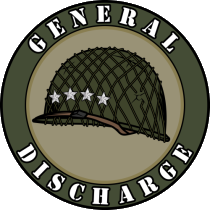
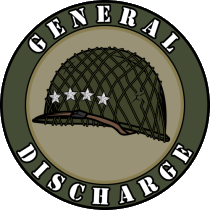
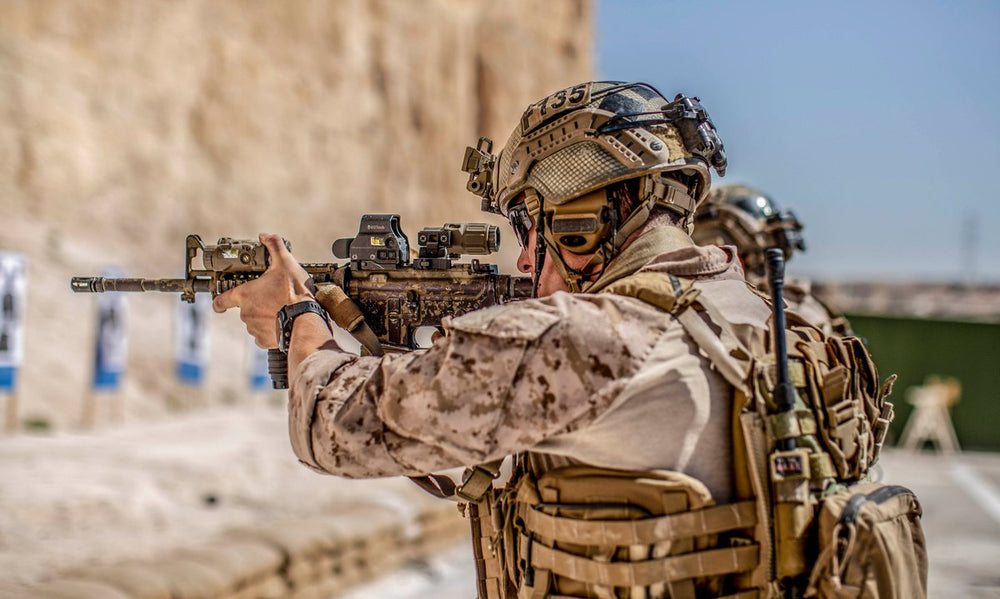
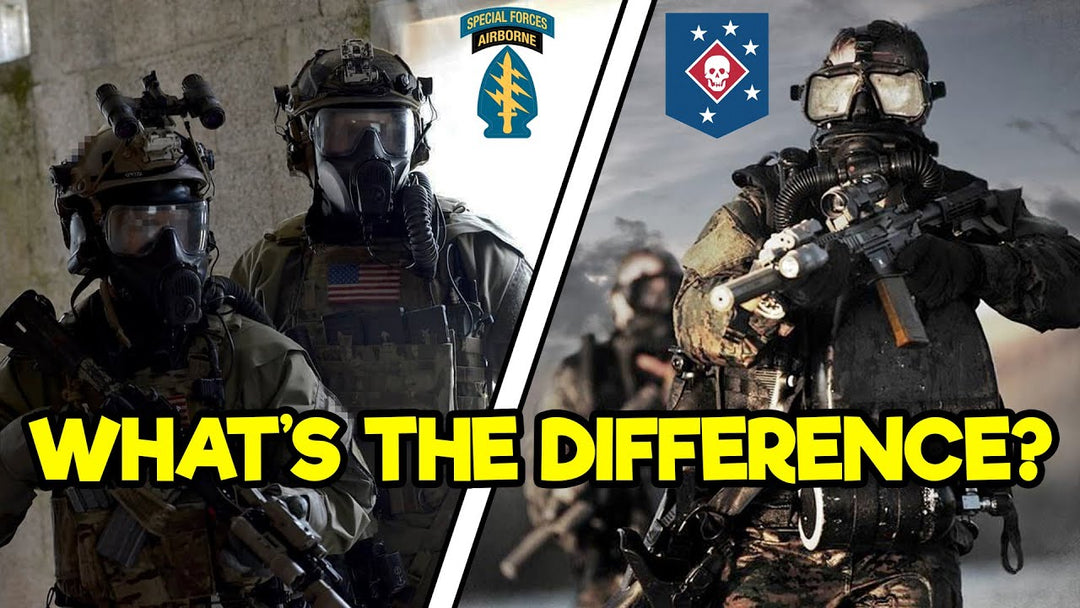
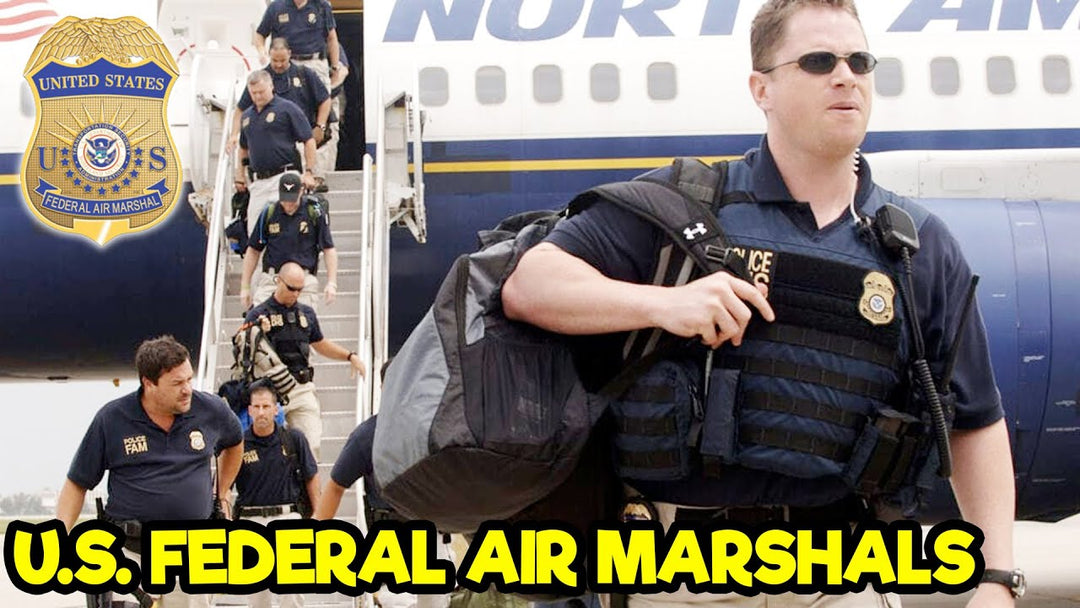
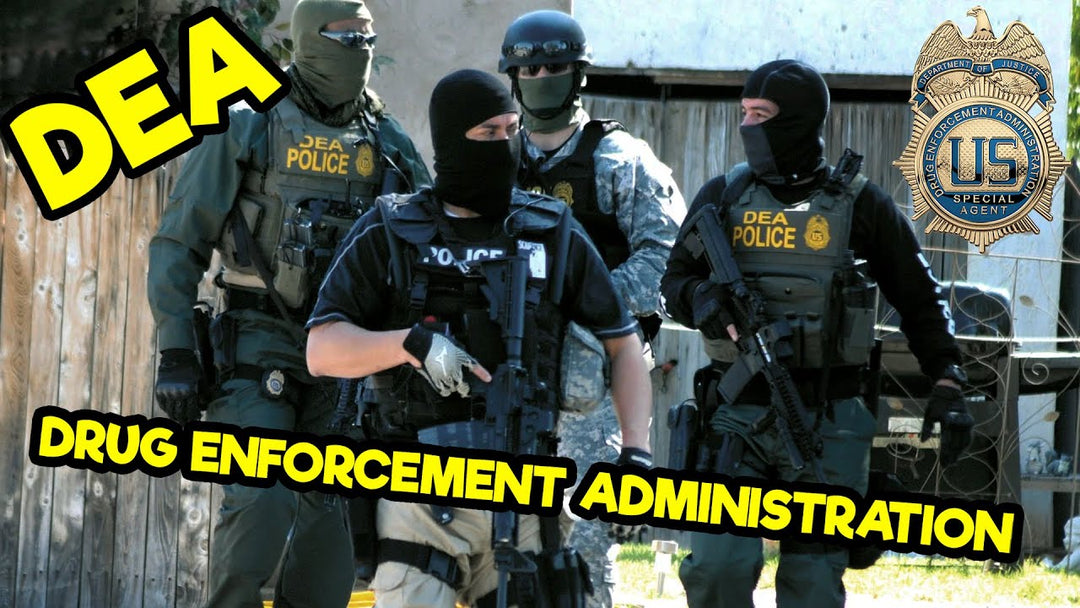
Leave a comment